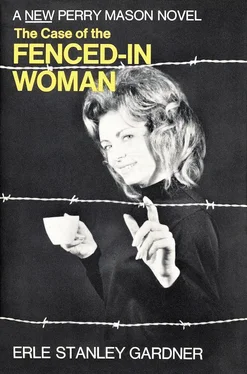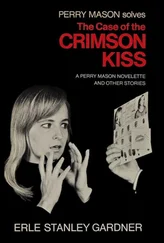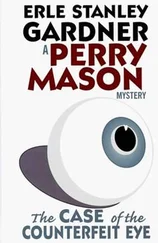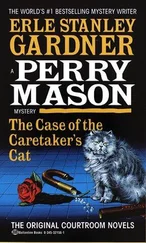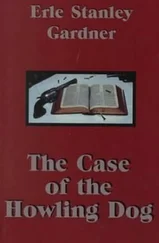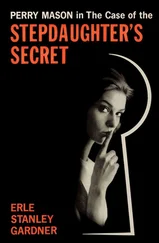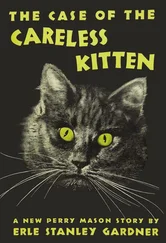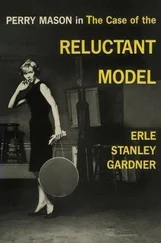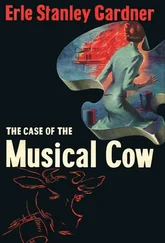By this time it was well known that Mason was, to use the expression, “going it blind,” that his clients were not making any statements to anyone, had made none to the press and didn’t intend to make any.
Some of the reporters had intimated that this was simply masterly strategy on Mason’s part and that the defendants were following their attorney’s instructions. Others, however, were convinced that Mason was as much in the dark about the defendants’ side of the case as anyone — a situation which brought sex, mystery, drama and an unusual setting into a murder case and resulted not only in a jam-packed courtroom but in a crowded corridor where people waited, hoping that by standing in line during the morning they might have some chance of getting into the courtroom in the afternoon.
“Does the prosecution wish to make an opening statement?” Judge Fisk asked.
Ormsby nodded, arose and said, “May it please the Court, and you ladies and gentlemen of the jury, this is going to be one of the briefest opening statements I have ever made.
“The decedent, Loring Carson, and the defendant, Vivian Carson, were husband and wife. They weren’t getting along. Vivian Carson sued for divorce.
“In the meantime, Morley Eden, the other defendant, hired Loring Carson to build a house for him. That house was built upon two lots which the defendant, Eden, purchased from Loring Carson.
“I won’t go into all of the legal difficulties, but it turned out that of the two lots on which the house was built the decedent, Loring Carson, owned one as his separate property and the defendant, Vivian Carson, owned the other as her separate property. When the title was adjudicated Vivian Carson placed a fence along her boundary, dividing the house into two parts. The defendant, Morley Eden, having a deed from Loring Carson, owned the other side of the house.
“Each defendant had a grievance against Loring Carson: Vivian Carson, because she felt her husband had been secreting money in such a manner that she couldn’t get a fair accounting in the divorce action. As the evidence will show, this suspicion was justified.
“Morley Eden had purchased lots from the decedent, Loring Carson, and had paid him to build a house on those lots. He found out that Carson had lied to him as to the title and that as a result Morley Eden’s house was partially built on property which did not belong to him.
“We are going to show that Loring Carson did have assets which he had been concealing and that he had arranged to conceal those assets in a place where he felt they would not be discovered — in a secret receptacle by the swimming pool of the house he was building for Morley Eden.
“By an ironic twist of fate, it turned out that of the two lots, the one awarded to the defendant, Vivian Carson, as her sole and separate property, contained the place of concealment for Loring Carson’s undisclosed assets.
“Loring Carson went to the premises and opened this secret place of concealment on the fifteenth day of March of this year. He evidently intended to leave his concealed assets right where they were, feeling that no one would ever suspect that his hiding place was actually right under the very eyes of his estranged wife.
“However, he was too confident. The defendants found his hiding place, and killed Loring Carson, either in cold blood or in an altercation which followed the finding of his hiding place.
“The defendant, Vivian Carson, waited until her ex-husband had betrayed the place of concealment, then, entirely nude, she emerged from the Morley Eden side of the house, while Eden stood guard. She swam under the barbed-wire fence and withdrew an unknown amount of cash and securities valued at more than a hundred and fifty thousand dollars from this hiding place. The securities were found in the possession of Perry Mason on the day of the murder.
“Loring Carson discovered what was happening and was killed by the defendants.”
“The Court will instruct you that once it has been established that a defendant, any defendant, has killed another human being, the burden of proof shifts to that defendant to prove any circumstances by way of extenuation or justification.
“It is true that we expect to establish our case in part by circumstantial evidence. Circumstantial evidence, however, is good evidence. We will show you beyond any question of doubt, by circumstantial evidence alone, that the defendants, acting together, killed Loring Carson and then attempted to conceal the evidence of their crime.
“The People of this State ask only justice at your hands. “Thank you.”
Ormsby walked back to his chair and sat down with the air of a man who is doing a disagreeable duty but intends to do it most competently.
Mason waived any opening argument at that time.
Then Ormsby, working with calm, dispassionate efficiency, his manner as thoroughly professional as that of a surgeon performing a difficult operation, started a procession of witnesses to the stand.
First he called an autopsy surgeon who testified that in his opinion Loring Carson had been dead anywhere from three to five hours when he made his examination. He placed the time of death as being between 10:30 A.M and 12:30 P.M on the fifteenth day of March.
Death, in the opinion of the autopsy surgeon, had been almost instantaneous, produced by a stabbing wound from a knife with an eight-inch blade. The wound had penetrated the heart muscle, but there had been a relatively small external hemorrhage, most of the bleeding being internal.
In the opinion of the autopsy surgeon the decedent had not moved from the time he was stabbed until death resulted, other than to collapse in his tracks and sprawl out on the floor.
Ormsby next introduced certified copies of the interlocutory judgment disposing of the property and awarding one of the lots on which the house had been built to Vivian Carson, the other lot to Loring Carson. He introduced a certified copy of the restraining order, restraining Loring Carson, his representatives, agents or assigns, from trespassing in any way on the property set aside to Vivian Carson.
Ormsby next called the surveyor, who testified briefly that he had been called by Vivian Carson; that he had been asked to have everything in readiness so that he could leave at a moment’s notice on a Saturday morning; that Vivian had called him, had had a locksmith who had opened the doors and made keys for the locks on her side of the house; that she had then instructed him to survey a line which was two inches inside her property line; that a construction crew had been waiting and that as soon as he had run a line through the house which was two inches inside of the line of property awarded to Vivian Carson, she had instructed the contractors to start stringing the fence.
The witness stated that he had remained on the job until the fence was completed, checking it with his transit; that he had gone to the opposite side of the house and had surveyed a line just two inches inside of the property line and had seen that when the fence was carried through the house the wire remained a uniform distance of two inches inside the property line.
“Did this defendant, Vivian Carson,” Ormsby asked the witness, “make any statement to you at that time as to why she desired the fence line to be kept two inches inside of her property line?”
“She did.”
“What did she say?”
“She said that if Morley Eden so much as put a finger on that fence it would constitute a trespass and a violation of the restraining order and she intended to have him cited for contempt.”
“Did she make any statement indicating how she felt toward the decedent, her former husband?”
“She said she hated the ground he walked on.”
Читать дальше
